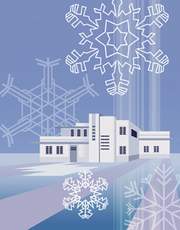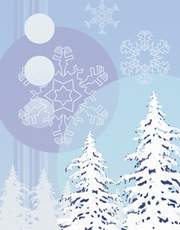 |
| Winter Solstice (II) |
 The close relation between the number “nine” and the Winter Solstice is also based on the theory of Yin and Yang. The ancient Chinese believed the theory could explain all phenomena in the universe. Numbers play a significant role in the theory. Even numbers belong to Yin and odd numbers to Yang. Nine is the largest Yang number and represents infinity and extremity. For a festival like this, when Yang begins to take root and gain ground, the greatest Yang number “nine” should certainly play a part. The close relation between the number “nine” and the Winter Solstice is also based on the theory of Yin and Yang. The ancient Chinese believed the theory could explain all phenomena in the universe. Numbers play a significant role in the theory. Even numbers belong to Yin and odd numbers to Yang. Nine is the largest Yang number and represents infinity and extremity. For a festival like this, when Yang begins to take root and gain ground, the greatest Yang number “nine” should certainly play a part.
The day of the Winter Solstice is the beginning of the first nine-day period. There are altogether nine nine-day periods, making a total of 81 days. The weather should improve a bit every “nine days”, and at the end of the ninth period, spring comes.
Based on practical experience and probably to speed things up a bit, people have created “cold dispelling” songs. Here is the translation of one of these songs.
The first and second “nine days” are so cold
 That we dare not hold out our hands, That we dare not hold out our hands,
Stray cats and dogs freeze to death
During the third and fourth “nine days”,
The fifth and sixth “nine days” see a thin veil of green
On the far bank of the river,
The rivers thaw during the seventh “nine days”,
The eighth “nine days” welcome the wild geese back,
Winter finally draws to an end in the last “nine days”,
When bright blossoms and flowers smile in warm spring.
 People also invented all kinds of entertainment to help pass the time during the long cold days, when the earth was asleep and there was no work to be done in the fields. One is painting a picture, which contains a plum tree with 81 flowers. They have not been colored in. Starting on the day of the Winter Solstice, one blossom is painted red each day, welcoming the birds and bursting buds of spring’s return. People also invented all kinds of entertainment to help pass the time during the long cold days, when the earth was asleep and there was no work to be done in the fields. One is painting a picture, which contains a plum tree with 81 flowers. They have not been colored in. Starting on the day of the Winter Solstice, one blossom is painted red each day, welcoming the birds and bursting buds of spring’s return.
Another custom uses a piece of paper with 81 squares drawn on it. Just like the plum blossom, one square is filled in every day. If it is cloudy, the upper half of the square is filled in; if it is clear, the lower half. A windy day is marked on the left half, and a rainy day on the right half. What if it snows? Well, there will be a small circle decorating the center of the square. When the square are all filled, spring has arrived and one has a weather report of the past 81 days.
In many families, the kids draw the 81 squares and then have fun filling them in. They can use different colored paints or crayons and with a bit of luck, end up with a cheerful piece of abstract art. It is good for their arithmetic and stimulates their interest in climatology. And being rationed to one square a day teaches them patience. It might even keep them out of mischief for a few minutes!
|
|
|













